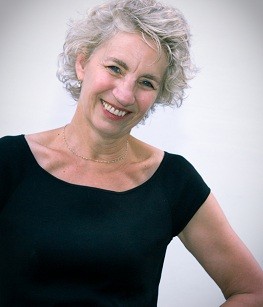Julia Steiny: Blackstone Valley Prep Knocks Itself Out to Educate ALL Kids
Thursday, April 05, 2012

Julia Steiny, GoLocal MINDSETTER™
I would have pegged Anna’s family as charter-school “application-challenged.” When struggling to survive, applying to a charter, returning the confirmation letter, and actually getting a kid to the coveted seat is a big job.
To their credit, BVP recruits application-challenged families by knocking on doors in tough neighborhoods. If a kid gets in but doesn’t show, they go find him and work out transportation, or whatever issues.
Anna is the sort of special-needs child that many charters have gently turned away. In the early days, the work of opening a new school was massive enough without developing programs for children with developmental delays, challenging behaviors or issues requiring specialized staff. These days, however, the best charters are building out their ability to teach whomever shows up. BVP is one such, but Highlander, Laborers, and Learning Community also spring to mind.
Even so, Colleen Colarusso, Head of BVP Elementary, ruefully admits that Anna “pushed my thinking about our ability to educate all kids. Sure, poor and minority. But a few – like Anna – come with very real, very substantial needs. They can’t communicate well, so we spend a lot of resources going through trial and error to figure it out.”
She continues, “Our goal is to serve the neediest kids in a diverse, integrated environment, hanging on tightly to our middle-class parents.” About 40 percent of the schools’ kids come from comfortable homes in Lincoln and Cumberland. They diffuse the concentration -- read: segregation -- of students from urban Central Falls and Pawtucket.
BVP groups and re-groups their student “scholars” throughout the day, so each gets individual attention at some point. This keeps the parents of the smart kids happy, but it also meets all kids where they are, and pushes them to reach for the next challenge.
How do you do that?
"Oh, says Colarusso, waiving her hand like it’s a non-issue, “Our whole program is RTI,” meaning Response to Intervention, the badly-named set of protocols designed to respond or intervene immediately whenever a student is not meeting expectations – social, behavioral or academic. RTI prevents minor challenges from becoming big ones later on. Colarusso explains, “We get adults together to share ideas about how to intervene with clearly defined goals for the child. We try our solutions for 6-8 weeks, collect data and then re-evaluate where we are.” If necessary, RTI repeats that process up to 3 times, in an effort to ramp up the child’s skills, making unnecessary a full-fledged Individual Education Plan (IEP), the indicator a child is in special education.
Many BVP kindergartners merely need help sorting out the sounds, or phonemes, that make up words they’re learning to read.
Others need much more. In one classroom, I observed four seriously special-needs students. One had rubbery bands tied on the far legs of his desk so his busy feet could work off the physical anxiety that impedes his learning. Another needed a special microphone to filter the teacher’s voice from ambient noise, to improve his “auditory processing,” or his brain's ability to make sense of language. In all four cases, the school and parents had worked out solutions together.
Anna, however, had the staff flummoxed. Fortunately for her, her home district is Central Falls, which has the only Superintendent of Schools I know of who actively partners with the charter schools that also educate “her” kids. She sent her Director of Special Education, Edda Carmadello, to help out.
Colarusso says, “For us, having a relatively young team, it was great to have a more seasoned special educator. We were struggling and we really needed expert advice. We continue to call her for her advice on other matters.” They worked out a new plan for Anna; things have gotten much better.
At this point, about 10 percent of BVP’s student body have IEPs. About half of those are the sort of children that regular schools often segregate into “self-contained” special-ed classrooms. BVP’s staff is keenly aware that in urban schools, the percentage of children with extreme needs is more like 20. That concentration makes it much harder to be successful with the Annas.
True, some unscrupulous charters still send their special-needs kids back to the sending district. But times are changing. The best are serving all kids. BVP’s test scores are off the charts, btw – a story for another day.
The point is that it’s high time to end the myth that charters schools only teach easy kids.
Colarusso and I are out by the playground in the bright, cold day watching kids run, scream and climb. “Oh great!” Collarusso exclaims. I see only exuberant chaos, but she points out a teacher helping Anna successfully navigate the monkey bars. Anna has asked an adult for help, avoiding a frustrated meltdown. She's meeting one of her goals. Big deal. Collarusso nods and beams, as if to say it’s been a long road, but we’re getting there.
This is when working in education feels great.
Julia Steiny is a freelance columnist whose work also regularly appears at EducationNews.org. She is the founding director of the Youth Restoration Project, a restorative-practices initiative, currently building a demonstration project in Central Falls, Rhode Island. She consults for schools and government initiatives, including regular work for The Providence Plan for whom she analyzes data. For more detail, see juliasteiny.com or contact her at [email protected] or c/o GoLocalProv, 44 Weybosset Street, Providence, RI 02903.
Related Articles
- AMSA Charter School and the Myth of the Dot-Com Bust
- Julia Steiny: Blackstone Valley School’s Nosedive is a Cautionary Tale
- Julia Steiny: Blackstone Valley Prep Knocks Itself Out to Educate ALL Kids
- Julia Steiny: An American School Successfully Uses An “Eastern Block” Curriculum




Follow us on Pinterest Google + Facebook Twitter See It Read It